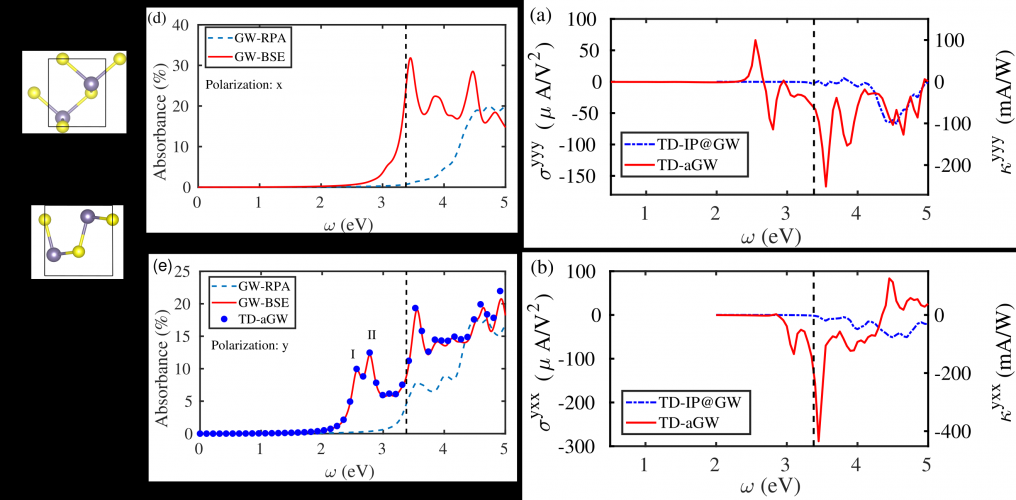Research Highlights
Y. H. Chan, Diana Y. Qiu, Felipe H. da Jornada, and Steven G. Louie
Proceedings of National Academy of Sciences, 118 (25) e1906938118 (2021).

Shift current is a direct current generated from nonlinear light–matter interaction in a noncentrosymmetric crystal and is considered a promising candidate for next-generation photovoltaic devices. The mechanism for shift currents in real materials is, however, still not well understood, especially if electron–hole interactions are included. Here, we employ a first-principles interacting Green’s-function approach on the Keldysh contour with real-time propagation to study photocurrents generated by nonlinear optical processes under continuous wave illumination in real materials. We demonstrate a strong direct current shift current at subbandgap excitation frequencies in monolayer GeS due to strongly bound excitons, as well as a giant excitonic enhancement in the shift current coefficients at above bandgap photon frequencies. Our results suggest that atomically thin two-dimensional materials may be promising building blocks for next-generation shift current devices.
